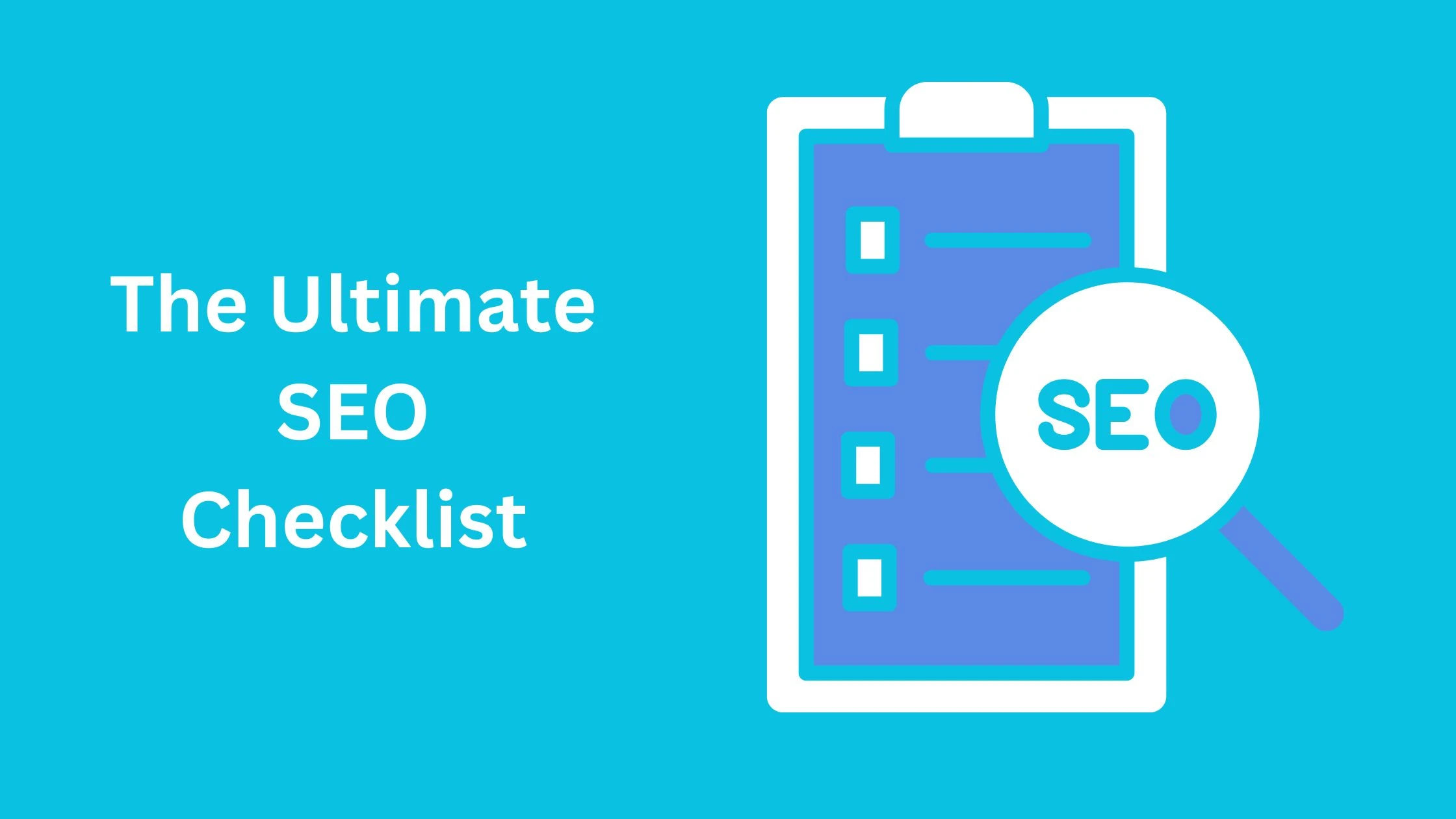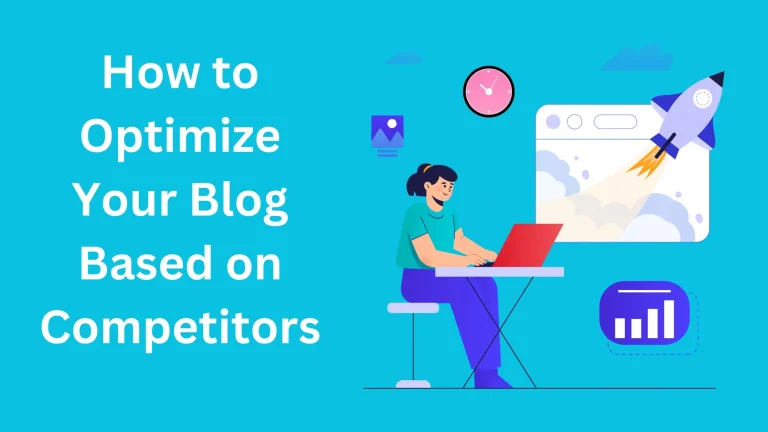The Ultimate SEO Checklist: A Step-by-Step Guide to improve Search Rankings in 2025

Did you know that 91% of web pages get zero organic traffic from Google? This startling statistic reveals just how many websites are failing to crack the code of search engine optimization. In today’s digital landscape, having a great website isn’t enough – you need a systematic approach to stand out in the crowded search results.
That’s where a complete SEO checklist becomes your secret weapon. Think of it as your roadmap to visibility, guiding you through the essential steps that transform your website from invisible to impossible to ignore. From technical foundations to content creation, this comprehensive guide will help you navigate the complexities of modern SEO with confidence.
Common SEO Challenges Websites Face
Many websites struggle with common SEO issues across multiple pages, making it hard for search engines to know which version to rank. Pages with thin, low-quality content often fail to meet user needs and rank poorly. Site owners frequently target the same keywords on different pages, creating unwanted competition within their own website.
Loading speed remains a constant battle, especially on mobile devices where users expect quick results. Getting quality backlinks takes time and effort, while keeping up with frequent algorithm updates can feel like hitting a moving target. Measuring the return on SEO work isn’t straightforward, and finding the right balance between optimization and user experience requires careful planning.
Importance of Using a Comprehensive SEO Checklist
A structured SEO checklist helps you stay organized and focused as you optimize your website. Without a clear plan, it’s easy to miss key steps that could affect your rankings. Following a checklist makes the complex process of SEO more manageable by breaking it into smaller, actionable tasks.
Working from a checklist lets teams implement SEO changes consistently across all pages. It creates a repeatable system for tracking progress and spotting areas that need attention. When everyone follows the same optimization steps, you’re more likely to see steady improvements in search visibility and traffic.
Keyword Research and Selection
Start your search optimization with Google Keyword Planner or SEMrush to find terms your target audience uses. Look at monthly search volumes and competition levels to pick keywords you can rank for. Mix short-tail keywords like “SEO tips” with specific long-tail phrases such as “how to do keyword research for bloggers.”
The best keywords match user intent – what people want when they type a search query. While short keywords bring high search volume, they’re harder to rank for. Long-tail keywords have lower competition, making them perfect for new websites starting their on-page SEO journey.
On-page Optimization Techniques
Put your main keyword near the start of your title tags to show search engines what each page covers. Keep meta descriptions under 160 characters and make them click-worthy. Use one H1 tag for your main title, then H2-H6 tags to organize content sections logically.
Create short, keyword-rich URLs that tell users and search engines what to expect. Add your target terms naturally throughout your content – forcing keywords makes text hard to read. Name your images clearly and include alt text that describes each visual accurately.
Link between related pages on your site to help visitors (and search engines) find more helpful information. This builds connections between your content and keeps people reading longer.
Off-page SEO Strategies
Building quality links starts with making content other sites want to reference. Write guest posts for respected industry blogs to build connections and get natural backlinks. Create helpful resources, studies, or tools that others will link to on their own.
Your off-page SEO strategies signal trust to search engines. Post regularly on platforms where your audience spends time. Talk with followers, answer questions, and share insights that add value. Watch what people say about your brand online and respond promptly to reviews – both good and bad.
Consider working with industry experts who can mention your site to their followers. This builds authority through association with trusted voices in your field.
Technical SEO Elements
Fast-loading pages keep visitors happy and help search rankings. Start by making your images smaller, cleaning up code, and using browser caching. Check your site works well on phones – Google ranks mobile-friendly pages higher.
Create an XML sitemap to help search engines find and index your pages quickly. Set up your robots.txt file to tell search crawlers which pages to check and which to skip. Adding an SSL certificate makes your site secure with HTTPS, which Google prefers.
Use schema markup to give search engines more details about your content. This extra code helps solve common SEO issues like rich snippets in search results, like star ratings or recipe instructions, which can boost click-through rates.
Local SEO Considerations
Get your business on Google My Business and fill out every detail – from hours to photos. Make sure your business name, address, and phone number match exactly across all online listings.
Sign up for trusted local business directories and ask happy customers to leave Google and Yelp reviews. Build pages for each location if you have multiple stores, with specific details about services and contact info for that spot.
Create content about local events, news, and topics that matter to people in your area. This helps you show up when people search for “[your service] near me” or “[your product] in [city name].”
Content Creation and Optimization
Write detailed content that answers specific questions your readers are asking. Include facts, stats, and examples to back up your points. Keep your on-page SEO checklist natural at 1-2% of the total word count – anything more makes your text hard to read.
Mix in related terms alongside your main keywords. For example, if you’re writing about “gardening tips,” include words like “plant care,” “growing vegetables,” and “soil preparation.” This shows search engines your content covers topics thoroughly.
Check your older posts every few months. Update statistics, add new information, and remove outdated advice. Search engines prefer fresh, current content. If you find thin pages with little substance, either add more helpful information or remove them entirely.
User Experience (UX) Factors
Good SEO starts with making your site easy to use. Clear menus and simple navigation help visitors find what they need quickly. Fast loading pages keep people around – most leave if a page takes more than 3 seconds to appear.
Make buttons and links easy to click on phones and tablets. Keep your layout clean and readable with plenty of space between paragraphs. Skip intrusive pop-ups that block content – Google may lower your rankings if mobile users can’t access information easily.
Link related pages together logically so readers can move naturally through your site. Watch how visitors use your pages through Google Analytics, then fix any spots where they get stuck or leave quickly.
Voice Search Optimization
People use voice assistants like Alexa, Siri, and Google Assistant to search differently than they type. They ask complete questions: “What’s the best pizza place near me?” instead of typing “best pizza NYC.” This means adding question-based content to your pages.
Create FAQ sections that match how people talk. Focus on phrases starting with “how,” “what,” “where,” and “why.” Make your answers clear and direct – voice assistants often pull from the first few lines of text.
Keep your content simple and easy to read aloud. Short sentences work better for voice results. Adding structured data helps search engines understand your content’s context and increases your chances of appearing in voice search results.
Video SEO
Videos rank well in search results when properly set up on YouTube and your website. Start by using your target keywords in video titles, descriptions, and tags. Create eye-catching thumbnails to improve click rates.
Add closed captions and transcripts – this helps search engines understand your content and makes videos accessible to more viewers. Put a complete transcript on your webpage to add text content search engines can read.
Keep video titles short but specific, like “How to Fix a Leaky Faucet – Step by Step Guide.” Make descriptions detailed with timestamps and links to related content. Submit a video sitemap to Google to help them find and index your video content faster.
E-commerce SEO
Online stores need product pages that stand out in search results. Give each item its own detailed description – don’t copy manufacturer text. Include specific details about size, color, materials, and features that shoppers want to know.
Add product schema markup to show prices, reviews, and stock status directly in search results and traffic. Set up 301 redirects for out-of-stock items to similar products instead of showing dead pages. Build strong category pages with helpful buying guides and product comparisons.
Use your target keywords in product titles naturally: “Men’s Blue Cotton T-Shirt” works better than “T-Shirt for Men Blue.” Link between related products to help customers find alternatives and accessories. Track which product pages bring in the most organic traffic and copy their success across your catalog.
Tools for SEO Analysis and Tracking
Google Search Console shows how your site appears in search results and flags technical problems. Track your rankings, clicks, and indexing status to spot issues early. Google Analytics reveals which pages bring in organic traffic and how visitors interact with your content.
SEMrush and Ahrefs help you find keywords and watch competitor rankings. Both tools track backlinks and show who’s linking to your site. Screaming Frog crawls your website to find common SEO issues like broken links, missing meta tags, and other technical SEO issues that need fixing.
Together, these tools paint a clear picture of your site’s search performance. Regular checks help you catch problems before they affect your rankings.
Monitoring and Measuring SEO Progress
Keep track of your organic traffic growth month over month through Google Analytics. Watch how your target keywords move up or down in search rankings. Set up tracking for specific actions visitors take after finding you through search, like signing up for newsletters or buying products.
Check your backlink profile’s health regularly – both the number and quality of sites linking to you matter. Monitor Core Web Vitals scores in Google Search Console to spot performance issues that could hurt rankings. Compare your metrics against past performance to identify what’s working and what needs adjustment.
Staying Up-to-date with SEO Trends and Algorithm Changes
Search engines update their ranking systems hundreds of times yearly. Following Google’s official blogs and social channels helps you spot major changes quickly. Join SEO forums and online groups where professionals share tips and discuss new ranking factors. Check our ranking strategies plans.
Read trusted SEO websites weekly to learn about algorithm updates and their effects. Watch what works for top-ranking sites in your industry – their success often points to effective tactics. Test new approaches on small sections of your site before making big changes.
Take notes during webinars and online courses to build your SEO knowledge steadily. The basics of good content and user experience stay constant, even as specific ranking factors shift.
Taking Action on Your SEO Journey
Implementing a complete SEO checklist might seem daunting at first, but remember that every successful website started exactly where you are now. The key is to tackle these optimization tasks one step at a time, measuring your progress and adjusting your strategy as you go.
Your SEO journey is a marathon, not a sprint. By following this comprehensive checklist and staying committed to continuous improvement, you’ll build a strong foundation for lasting search visibility. Start with the basics, celebrate small wins, and keep pushing forward – your future rankings will thank you for the effort you put in today.
Visit here to know about “how to rank higher in google“

With 5+ years of SEO experience, I’m passionate about helping others boost their online presence. I share actionable SEO tips for everyone—from beginners to experts.





